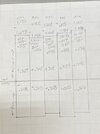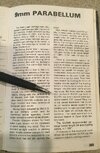- Joined
- Oct 19, 2022
- Messages
- 138
Just for the CZ. That’s a very important piece of information. CZ’s are famous for having short throats. Overall length variations have been known to cause chambering problems with CZ’s. But, you said you’re not having chambering issues, just a few sticky rounds. They fit going in but need a tap to get out.
Complete non-issue. It could be a dozen things - OAL variations, bullet profile variations, base bulges, bent rims, case length variations… lots of things that don’t matter can cause a case not to fall free from the chamber - including an oily chamber, btw.
Don’t change your setups, just learn to recognize minor differences and distinguish between a show stopper and a non issue.
The Lee seating die is a perfectly good die. It’s not the die. Just seat to your target length of 1.060” and recheck.
Heading that way now! going to set to 1.060, do another 20 and check results. Thanks.



